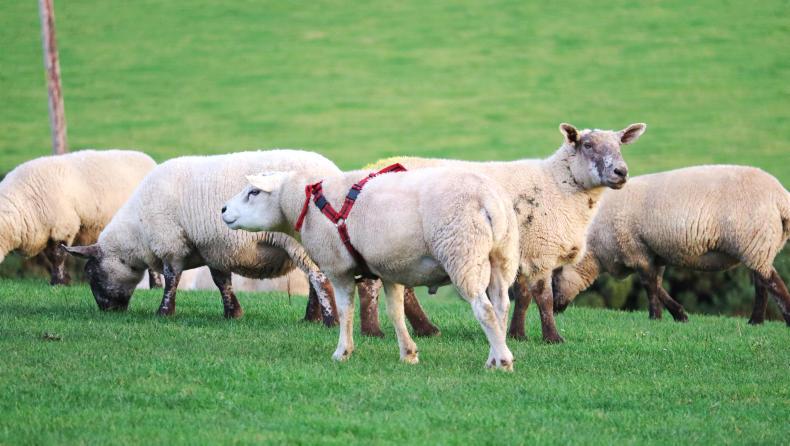There has been a noticeable change in weather conditions over the past week, with a distinct autumnal feel in the air. For sheep enterprises, thoughts should be well and truly on the breeding season ahead. At this stage, there are just six weeks until joining for mid-March lambing flocks and eight weeks for early April lambing flocks.
The decisions that are made over the coming days will have a direct effect on the number of lambs you produce next year. Getting simple things right, such as identifying cull ewes, giving tups their breeding fitness check and selecting replacement breeding stock, could be the difference between profit and loss next year.
Most of the focus farms identify cull ewes at weaning and so these ewes have already been sold out of the system. This was much easier to do this year as ewes were in very good order when lambs were taken off. Getting culls out of the system as early as possible not only aids cashflow in late summer, but also frees up valuable grass for priority stock in autumn as growth begins to tail off. Decent record-keeping makes selecting culls much easier. Using an ear-notcher to mark any problematic ewes at lambing time and throughout the year is a simple and effective way to help identify culls. However, all ewes in the flock should be checked for breeding fitness at this time of year.
There is a direct link between ewe body condition score (BCS) at mating time and lamb litter size. Figure 1 outlines work undertaken by AHDB over a five-year period which shows that as ewe BCS increases, so too does lamb litter size within the range of 1.5-4.5. Obviously we do not want overfat ewes as this may have a negative effect on litter size – this can sometimes be the case with gimmers if not managed correctly. However, typically the issue for mature ewes relate to being under rather than over-conditioned.
While BCS of ewes is decent this year, there will still be ewes within the flock that are below optimum. Identifying these now and giving them access to better grazing in the run up to mating will improve your overall scanning rates.
It takes 10 weeks of good grass to increase one unit on BCS (scale 1.0-5.0). Therefore, this is a job that needs to be done this week if you are to make a significant difference to body condition.
As the saying goes, the ram is half the flock. A few simple checks on breeding rams could save major problems down the line. An under-performing ram can be devastating to the flock, leading to high empty rates and poor scanning performance. Not only that, rams with weaknesses will go on to throw offspring with weaknesses. When selling fat, this is perhaps not so important as when breeding replacements. A ram with poor feet and an undershot jaw will go on to breed ewes with poor feet and an undershot jaw. Is this the type of flock that you would like to breed from in the future?
It takes six weeks for sperm production to recover after a problem, so testing rams as soon as possible is important.
A simple way to remember the key points to look at when carrying out a ram MOT is the five Ts.
Toes
To perform to best effect, the ram must be fit to get around the field and mount ewes. Check them for:
Locomotion – do they walk well? If not, is there anything that can be done ahead of tupping to remedy this.Condition of feet – often poor locomotion can be put down to poor feet. While down there, check the brisket to make sure there are no sores.Tone
Get your hands on the rams and check body condition.
Rams that are too thin may not manage to serve all of the ewes in their group.Rams that are too fat could have a lower libido, and excess fat in the scrotum can reduce fertility.Ideally, rams should be CS 3.5 – CS 4.0 to ensure sufficient energy reserves for tupping.Is there sufficient time ahead of breeding to build body condition?Remember it takes three weeks for the rumen to adjust to dietary changes.It is also worth asking if condition is poor, why?Teeth
Like their female counterparts, rams should have the condition of their teeth checked.
Position of the jaw. Are the teeth meeting correctly or are they misaligned (under- or over-shot)?Molar abscesses will compromise intake, which ultimately will hit performance of the ram. Testicles
Once the general mobility and nutritional checks are carried out, the next stage is to check the testicles. Poor fertility often stems from poor testicular condition. Degeneration can occur in warmer weather when rams spend greater amounts of time lying down, preventing the testicles from cooling themselves.
Testicles should be as firm as a tensed bicep.They should not have any lumps or bumps.Size does vary across the year and with age, however, testicles should measure over 34cm for ram lambs and 36cm for mature rams.Also, check the penis to make sure that it moves freely in the prepuce, has no lumps or bumps and shows no sign of injuries.Treatments
Now is also the time to give the ram any treatments he may need ahead of going to work.
Vaccinations.Parasites.Lameness.While the above is a relatively easy process, it is a good idea to get your vet involved the first time you do it. The vet can also take a semen sample from each ram to check the quality of the semen.
With all of the above information, they should also be able to give you an idea as to how many ewes each ram would be capable of serving in the season.
There has been a noticeable change in weather conditions over the past week, with a distinct autumnal feel in the air. For sheep enterprises, thoughts should be well and truly on the breeding season ahead. At this stage, there are just six weeks until joining for mid-March lambing flocks and eight weeks for early April lambing flocks.
The decisions that are made over the coming days will have a direct effect on the number of lambs you produce next year. Getting simple things right, such as identifying cull ewes, giving tups their breeding fitness check and selecting replacement breeding stock, could be the difference between profit and loss next year.
Most of the focus farms identify cull ewes at weaning and so these ewes have already been sold out of the system. This was much easier to do this year as ewes were in very good order when lambs were taken off. Getting culls out of the system as early as possible not only aids cashflow in late summer, but also frees up valuable grass for priority stock in autumn as growth begins to tail off. Decent record-keeping makes selecting culls much easier. Using an ear-notcher to mark any problematic ewes at lambing time and throughout the year is a simple and effective way to help identify culls. However, all ewes in the flock should be checked for breeding fitness at this time of year.
There is a direct link between ewe body condition score (BCS) at mating time and lamb litter size. Figure 1 outlines work undertaken by AHDB over a five-year period which shows that as ewe BCS increases, so too does lamb litter size within the range of 1.5-4.5. Obviously we do not want overfat ewes as this may have a negative effect on litter size – this can sometimes be the case with gimmers if not managed correctly. However, typically the issue for mature ewes relate to being under rather than over-conditioned.
While BCS of ewes is decent this year, there will still be ewes within the flock that are below optimum. Identifying these now and giving them access to better grazing in the run up to mating will improve your overall scanning rates.
It takes 10 weeks of good grass to increase one unit on BCS (scale 1.0-5.0). Therefore, this is a job that needs to be done this week if you are to make a significant difference to body condition.
As the saying goes, the ram is half the flock. A few simple checks on breeding rams could save major problems down the line. An under-performing ram can be devastating to the flock, leading to high empty rates and poor scanning performance. Not only that, rams with weaknesses will go on to throw offspring with weaknesses. When selling fat, this is perhaps not so important as when breeding replacements. A ram with poor feet and an undershot jaw will go on to breed ewes with poor feet and an undershot jaw. Is this the type of flock that you would like to breed from in the future?
It takes six weeks for sperm production to recover after a problem, so testing rams as soon as possible is important.
A simple way to remember the key points to look at when carrying out a ram MOT is the five Ts.
Toes
To perform to best effect, the ram must be fit to get around the field and mount ewes. Check them for:
Locomotion – do they walk well? If not, is there anything that can be done ahead of tupping to remedy this.Condition of feet – often poor locomotion can be put down to poor feet. While down there, check the brisket to make sure there are no sores.Tone
Get your hands on the rams and check body condition.
Rams that are too thin may not manage to serve all of the ewes in their group.Rams that are too fat could have a lower libido, and excess fat in the scrotum can reduce fertility.Ideally, rams should be CS 3.5 – CS 4.0 to ensure sufficient energy reserves for tupping.Is there sufficient time ahead of breeding to build body condition?Remember it takes three weeks for the rumen to adjust to dietary changes.It is also worth asking if condition is poor, why?Teeth
Like their female counterparts, rams should have the condition of their teeth checked.
Position of the jaw. Are the teeth meeting correctly or are they misaligned (under- or over-shot)?Molar abscesses will compromise intake, which ultimately will hit performance of the ram. Testicles
Once the general mobility and nutritional checks are carried out, the next stage is to check the testicles. Poor fertility often stems from poor testicular condition. Degeneration can occur in warmer weather when rams spend greater amounts of time lying down, preventing the testicles from cooling themselves.
Testicles should be as firm as a tensed bicep.They should not have any lumps or bumps.Size does vary across the year and with age, however, testicles should measure over 34cm for ram lambs and 36cm for mature rams.Also, check the penis to make sure that it moves freely in the prepuce, has no lumps or bumps and shows no sign of injuries.Treatments
Now is also the time to give the ram any treatments he may need ahead of going to work.
Vaccinations.Parasites.Lameness.While the above is a relatively easy process, it is a good idea to get your vet involved the first time you do it. The vet can also take a semen sample from each ram to check the quality of the semen.
With all of the above information, they should also be able to give you an idea as to how many ewes each ram would be capable of serving in the season.






 This is a subscriber-only article
This is a subscriber-only article











SHARING OPTIONS: